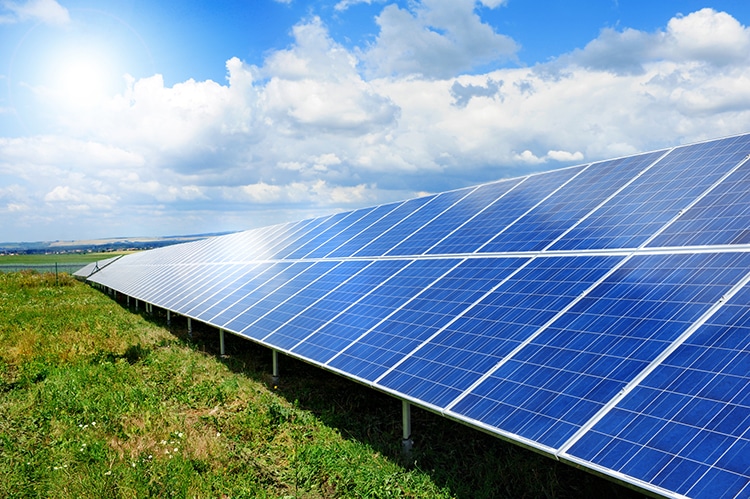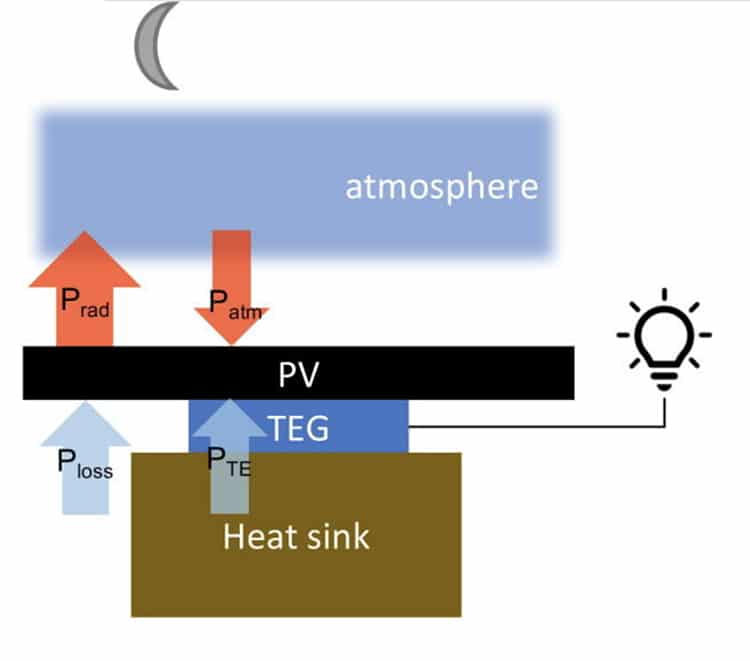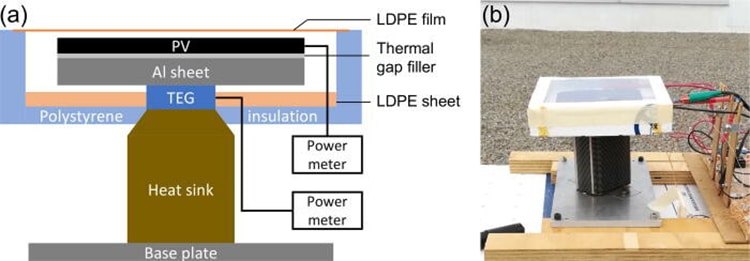
Photo: FYLETTO/Depositphotos
Solar panels are an increasingly popular form of renewable energy. Whether used off-grid, on mini-grids, or as part of large energy systems, these panels are becoming more accessible and affordable. They transform the sun’s radiation into usable energy, which is often stored in batteries for use once the sun goes down. A research team at Stanford University is working to solve the problem of bulky batteries and dark hours. As announced in Applied Physics Letters, a new nighttime-friendly solar panel will supply energy around the clock, harnessed from either the sun or Earth.
The new device design functions as a normal solar panel during the daylight hours, capturing the rays of energy from the sun. As evening falls and a solar panel cools, it comes to rest at a temperature slightly under the air temperature. This differential can be harnessed by a thermoelectric generator module (TEG) which generates voltage and current from the temperature gradient (or difference).
The atmosphere around the cell is warmed by a new heat source: Earth. Our planet absorbs heat from the sun during the day, which is later radiated back to space. The new device on a clear night can produce 50 mW/m2 of power, with an open-circuit voltage of 100 mV. This is a much higher energy level than other efforts to capture energy at night. The device is built with readily available materials, so the team hopes it can be useful in many global areas where people lack access to electrical grids. It will, however, take further refinement to improve efficiency before we can expect to see nighttime solar panels on rooftops.
Researchers at Stanford University have developed a solar panel which collects the sun’s energy during the day but which can also capture thermoelectric energy at night.

A cchematic showing the energy balance of the PV cell during nighttime power generation from radiative cooling of the cell. (Photo: Fig. 1 (a)/Sid Assawaworrarit)
The panels use the heat emitted from Earth itself into space to run in the night, eliminating the need to store daytime energy in batteries.

Design and prototype of a PV-TEG device. (Photo: Fig. 2/Sid Assawaworrarit)
h/t: [NPR]
Related Articles:
Germany Accelerates Its Clean Energy Goals After Freezing Russian Pipeline Plans
Geothermal Company Plans to Dig Down 12.5 Miles To Harness the Energy of Earth
Aerial Photos Capture the Mesmerizing Enormous Solar Farms Around the World
